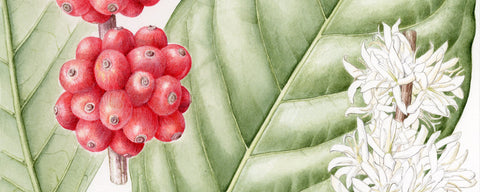Carbonic maceration is a fermentation technique originally used in wine making. Often described as giving fresh fruit flavours and lowering tanins, the technique is famously used to produce wines from the French region of Beaujolais. Despite being used in winemaking since 1934, carbonic maceration only came to prominence in the coffee industry in 2015, when it was used by Saša Šestić in his World Barista Championship-winning routine.
Carbonic maceration is a type of anaerobic fermentation – that is, any type of fermentation that takes place under low or no oxygen conditions.

Carbonic maceration is achieved by placing whole, undamaged coffee cherries into a sealed vessel, either plastic or stainless steel, usually with a one-way-valve to release pressure build-up, and allowing the cherries to undergo fermentation. Following a similar process to standard anaerobic fermentation, carbonic maceration differs in that the sealed vessel is immediately pumped full of carbon dioxide.
During traditional coffee processing, fermentation begins naturally when microorganisms present on the surface of the coffee cherry gain access to the sugary mucilage or fruit flesh – this process occurs for washed or honey processed coffees during pulping. The same process occurs for naturally processed coffees as the fruit begins to dry. When using carbonic maceration, the skin of the coffee cherry is left unbroken, preventing access to the mucilage by microorganisms. Instead, encouraged by the carbon dioxide-rich atmosphere, the coffee cherries undergo intracellular fermentation, a process that occurs from the inside out.
This experimental coffee processing technique gives producers a high degree of control over the fermentation process as they are able to manipulate temperature and pH to alter the speed and degree of fermentation. The carbonic maceration process also allows producers to create an environment that differs greatly from that of standard coffee processing techniques, allowing them to produce a wider range of flavour profiles and diversify their offering.


